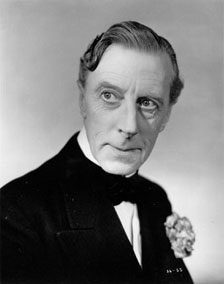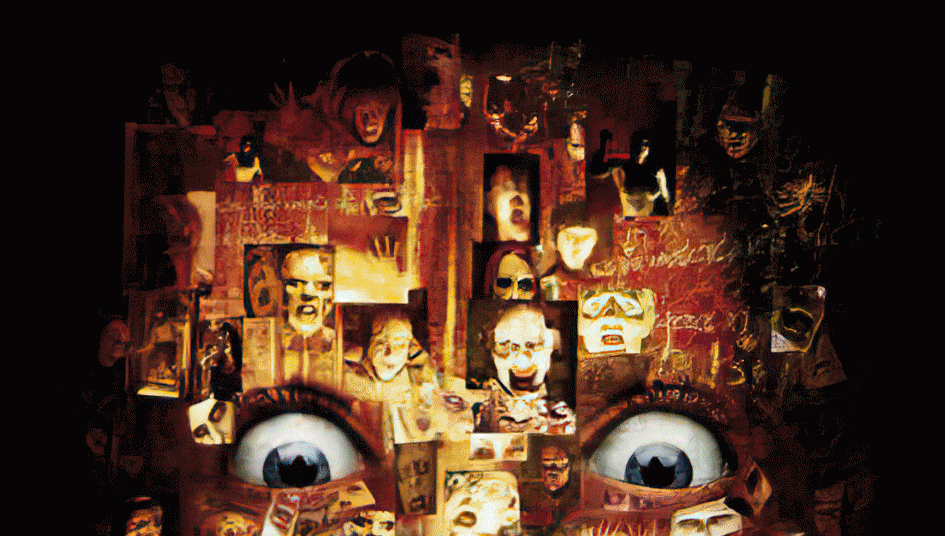 When one usually hears the words “Universal Horror” many names quickly come to mind. The first, and most obvious, names are Bela Lugosi and Boris Karloff. Other famous actors that might pop into heads are Claude Raines, both Lon Chaneys, and perhaps even John Carradine. Behind the camera, the most often-associated names in the early horror and science fiction films are usually directors James Whale and Tod Browning, producers Carl Laemmle, Jr. and Paul Kohner, and make-up artist Jack Pierce. Having been such an enormous and popular influence on just about every aspect of popular culture since the very beginning, there have been no shortage of books, articles and documentaries on the Universal cycle, or the names usually associated with it.
When one usually hears the words “Universal Horror” many names quickly come to mind. The first, and most obvious, names are Bela Lugosi and Boris Karloff. Other famous actors that might pop into heads are Claude Raines, both Lon Chaneys, and perhaps even John Carradine. Behind the camera, the most often-associated names in the early horror and science fiction films are usually directors James Whale and Tod Browning, producers Carl Laemmle, Jr. and Paul Kohner, and make-up artist Jack Pierce. Having been such an enormous and popular influence on just about every aspect of popular culture since the very beginning, there have been no shortage of books, articles and documentaries on the Universal cycle, or the names usually associated with it.
Despite this vast array of information and history of one of the first great phases of motion picture history, one name has surprisingly evaded recognition. One actor, a shadowy, mysterious man, has become almost unknown in recent years.
That man is Ernest Thesiger (1879-1961), who starred in the legendary films The Bride of Frankenstein and The Old Dark House, both featuring Boris Karloff. Apart from many stage appearances and the few major films he was involved in, he usually filmed cameos, including a brief appearance in Sir Larry Olivier’s Henry V.
 Other than a minor character actor, who was this man? Ernest Frederic Graham Thesiger was born to a well-off, influential family in 1879. His cousin, Wilfred Thesiger, eventually became a known author and his uncle, Britsh General Frederic Augustus Thesiger, was the British commander of the ill-fated Battle of Isandlwana against the Zulu in 1897. Educated at the famous Marlborough College, he quickly became interested in drama, and performed his first professional role in 1909. He married a friend’s sister in 1917, but this was considered to be a lavender marriage. Rumor has it that he was quite open about being gay, though this is unsubstantiated.
Other than a minor character actor, who was this man? Ernest Frederic Graham Thesiger was born to a well-off, influential family in 1879. His cousin, Wilfred Thesiger, eventually became a known author and his uncle, Britsh General Frederic Augustus Thesiger, was the British commander of the ill-fated Battle of Isandlwana against the Zulu in 1897. Educated at the famous Marlborough College, he quickly became interested in drama, and performed his first professional role in 1909. He married a friend’s sister in 1917, but this was considered to be a lavender marriage. Rumor has it that he was quite open about being gay, though this is unsubstantiated.
Although he had appeared in his first film role in 1916, Thesiger’s first Hollywood role was given to him by his good friend James Whale, who he had met in 1919. The Old Dark House, made in 1932, also served as the first American film of Charles Laughton. Thesiger portrayed Horace Femm, head of the Femm household and employer of Karloff’s brutish butler character. When Whale agreed to direct the sequel to his legendary film, Frankenstein, the first role he allegedly cast was that of Dr. Septimus Pretorius, who he immediately gave to Thesiger. The seemingly gay, hideous-looking Pretorius, a former mentor to Baron Henry Frankenstein, attempts to coerce and blackmail his former student into helping him create a second creature. He uses Frankenstein’s original creation to accomplish this. He perishes, along with the Monster and his Bride, in an explosive finale while Baron Henry is able to escape.
 Despite these two major roles, Thesiger remains a near-anonymous figure in movie history. He was somewhat renowned during his lifetime—mainly as a stage actor—and was as equally renowned for his embroidery. He even wrote a popular book on needlework, Adventures in Embroidery. His last role of any kind, a tiny role in 1962’s Invitation to Murder, was filmed right before he died of natural causes. Before his death he was awarded the order of Commander of the British Empire (CBE).
Despite these two major roles, Thesiger remains a near-anonymous figure in movie history. He was somewhat renowned during his lifetime—mainly as a stage actor—and was as equally renowned for his embroidery. He even wrote a popular book on needlework, Adventures in Embroidery. His last role of any kind, a tiny role in 1962’s Invitation to Murder, was filmed right before he died of natural causes. Before his death he was awarded the order of Commander of the British Empire (CBE).
Though his contributions to the science fiction and horror film is quite small, he played one of the most iconic roles of all time in one of the greatest science fiction and horror films of all time, and set the standard for future mad scientist characters. His interpretations of characters like Pretorius have been examined by experts in many fields, and have proven to be extremely complex and layered. For this he deserves to be remembered.
I am currently on the hunt for his 1927 autobiography, Practically True, which was written before he performed the roles that almost everyone who has heard of him remembers him by. I have been doing extensive research the past few days online, and have not been able to find any book-length study of his life. Despite a few good blog posts and sketches about the mysterious thespian, there are no books devoted entirely about him. I hope to change that here very soon.











I was really glad to see this post, John. You’re absolutely right that very little is written about Thesiger, despite him having been so memorable in two genre classics. (There’s also The Ghoul, Karloff’s first British horror, but that one’s not quite in the same league.)
He’s so deliciously subversive in Bride of Frankenstein — highly camp and waspish, a performance unlike anything else in the genre.
Aside from the James Whale movies, his filmography is a pretty impressive list of very respectable, often very good, British movies. I’d love to know more about the man behind the performances.